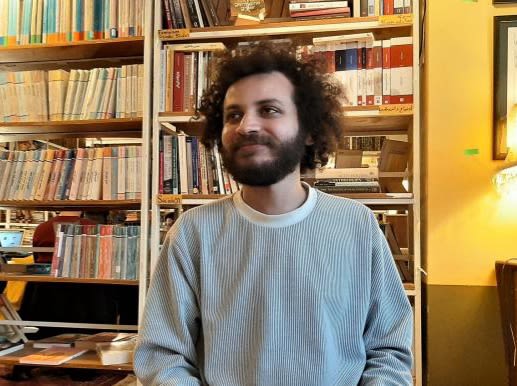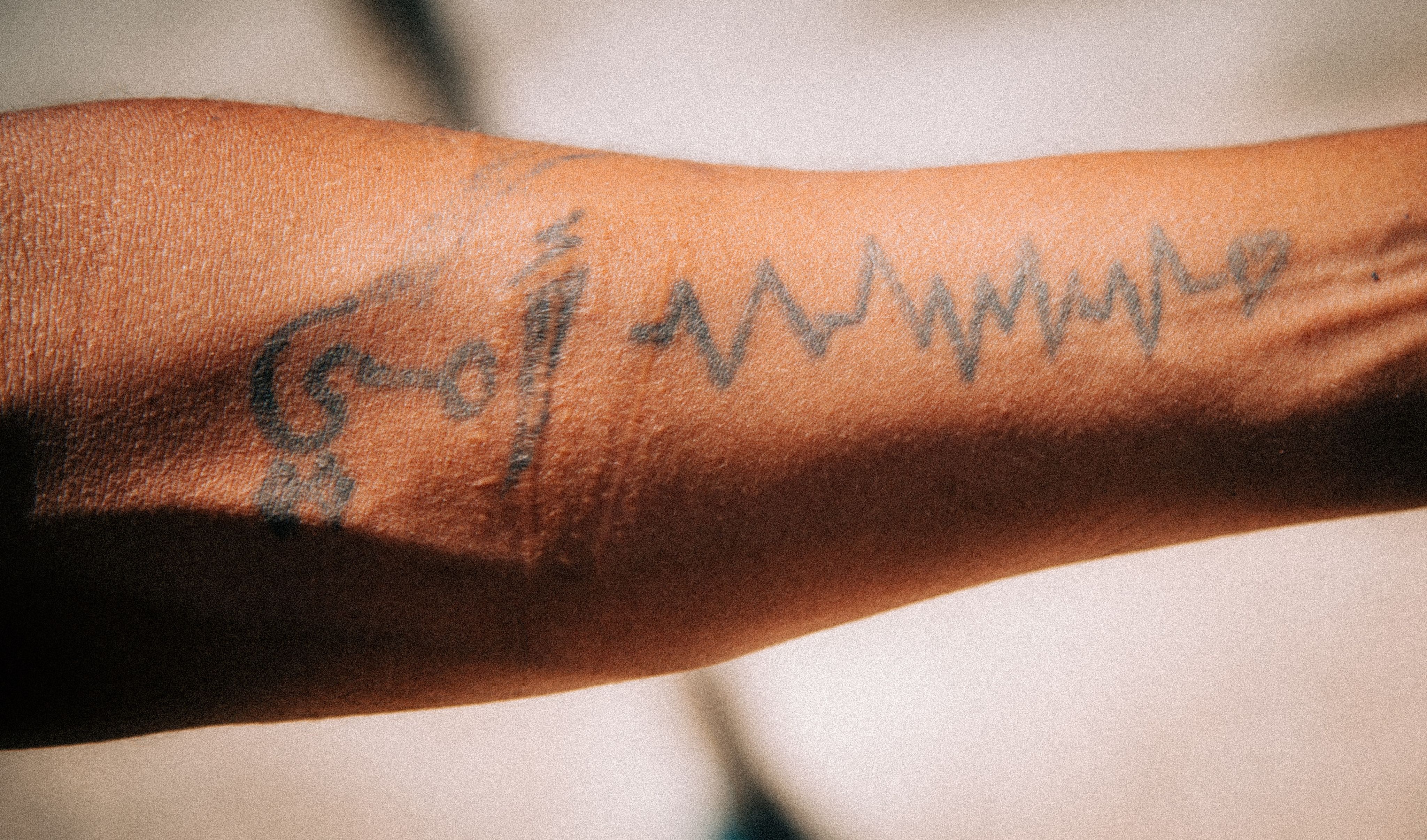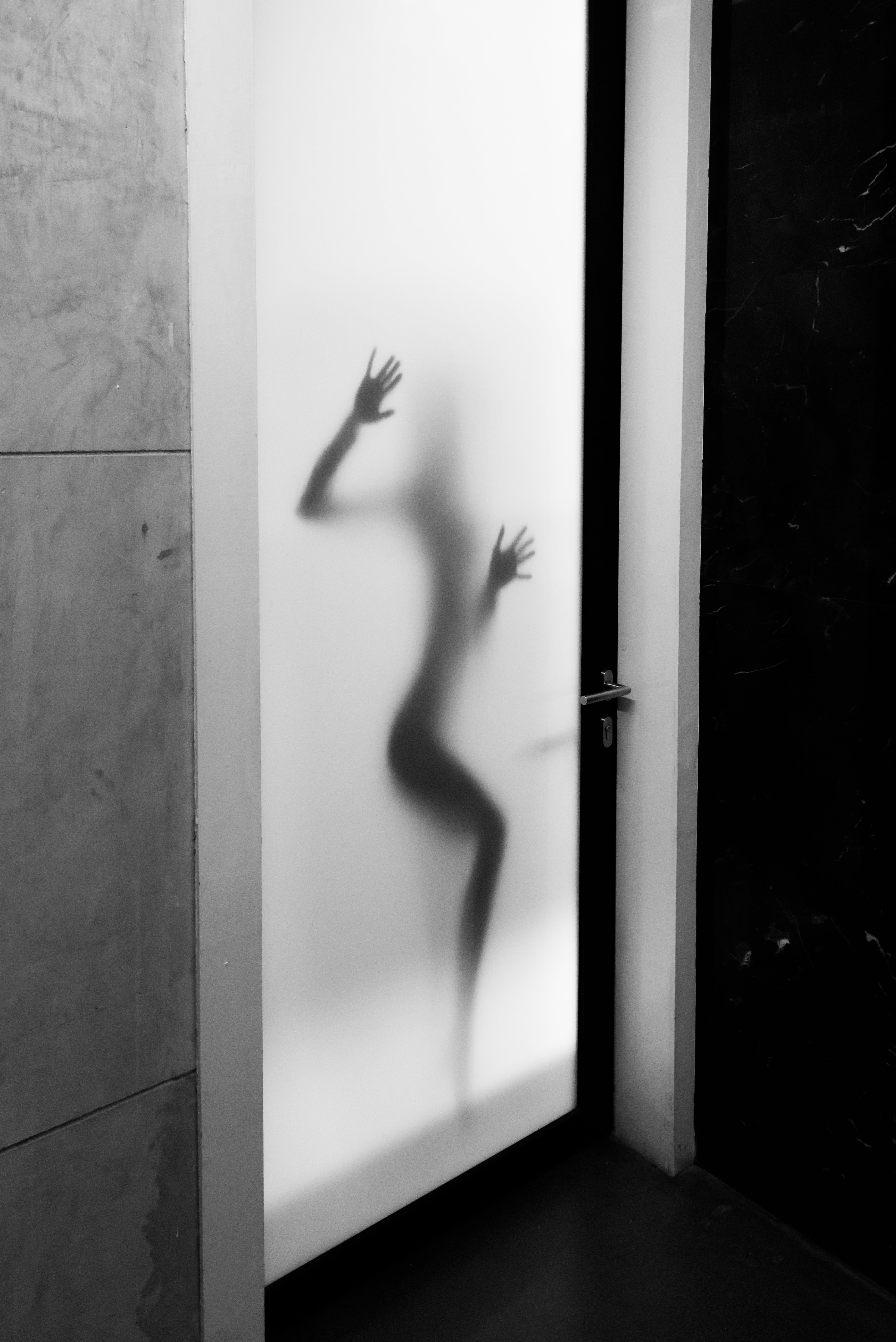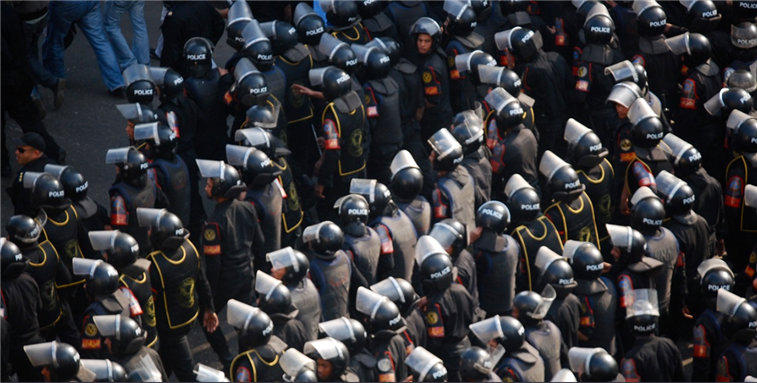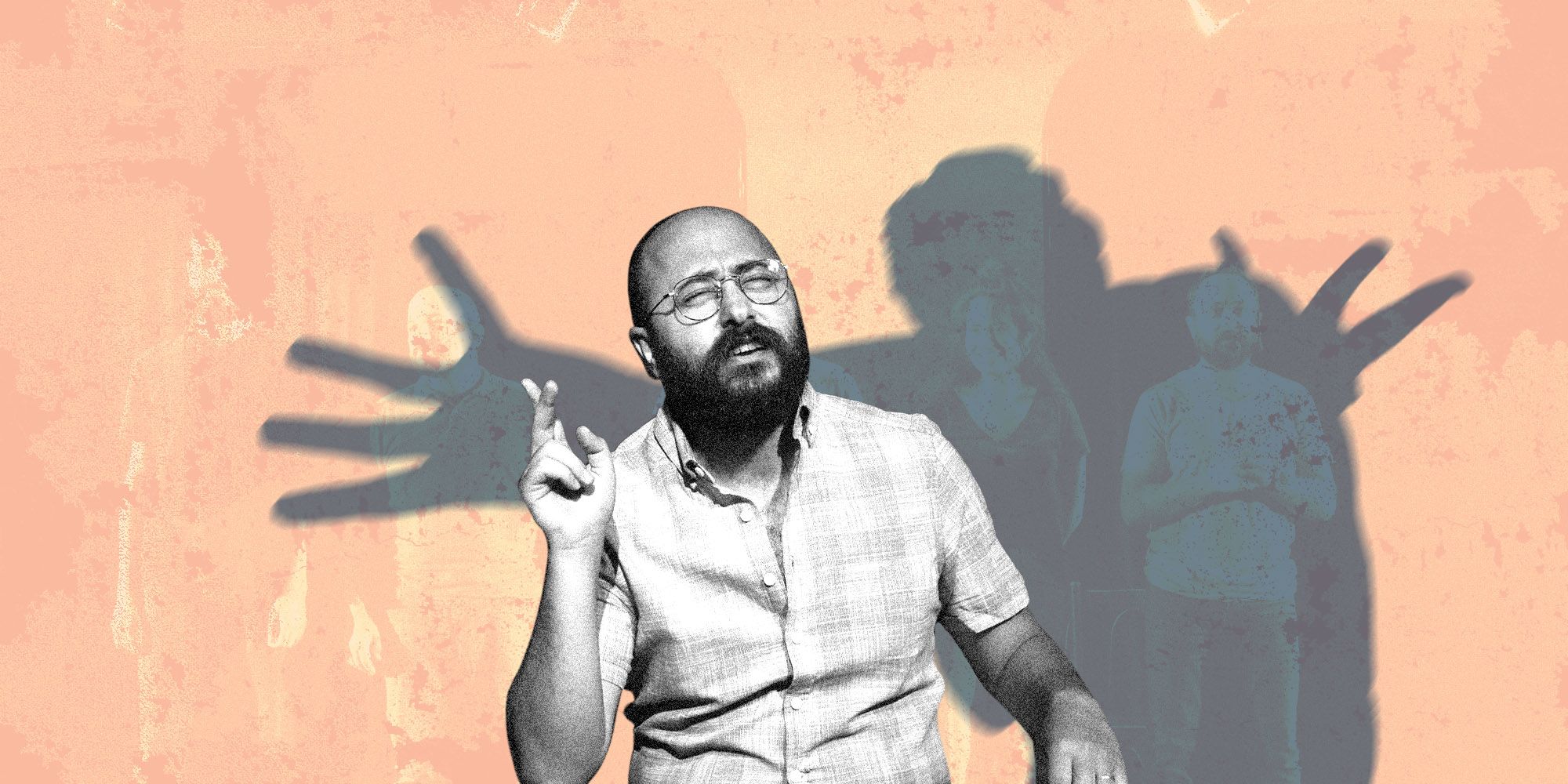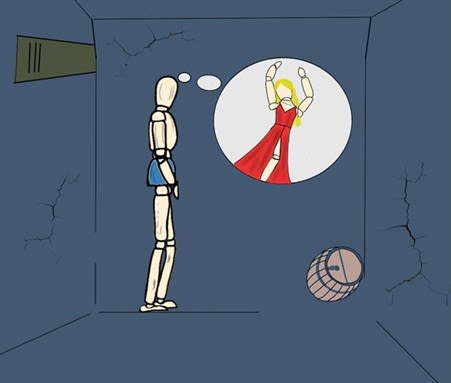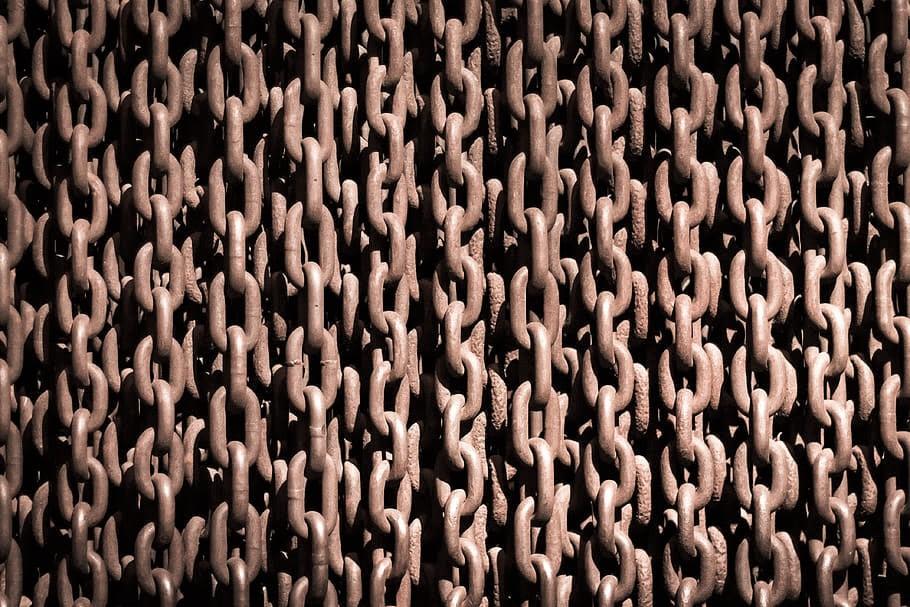The Body
Unleash, Express, Connect: The Body's Narrative Nexus

The body and its representation inside the Prison (1/3)
The Body and Politics in Egypt After 2013 (2/3)
The ideal body of women and its representation in Egypt (3/3)
Articles


Books

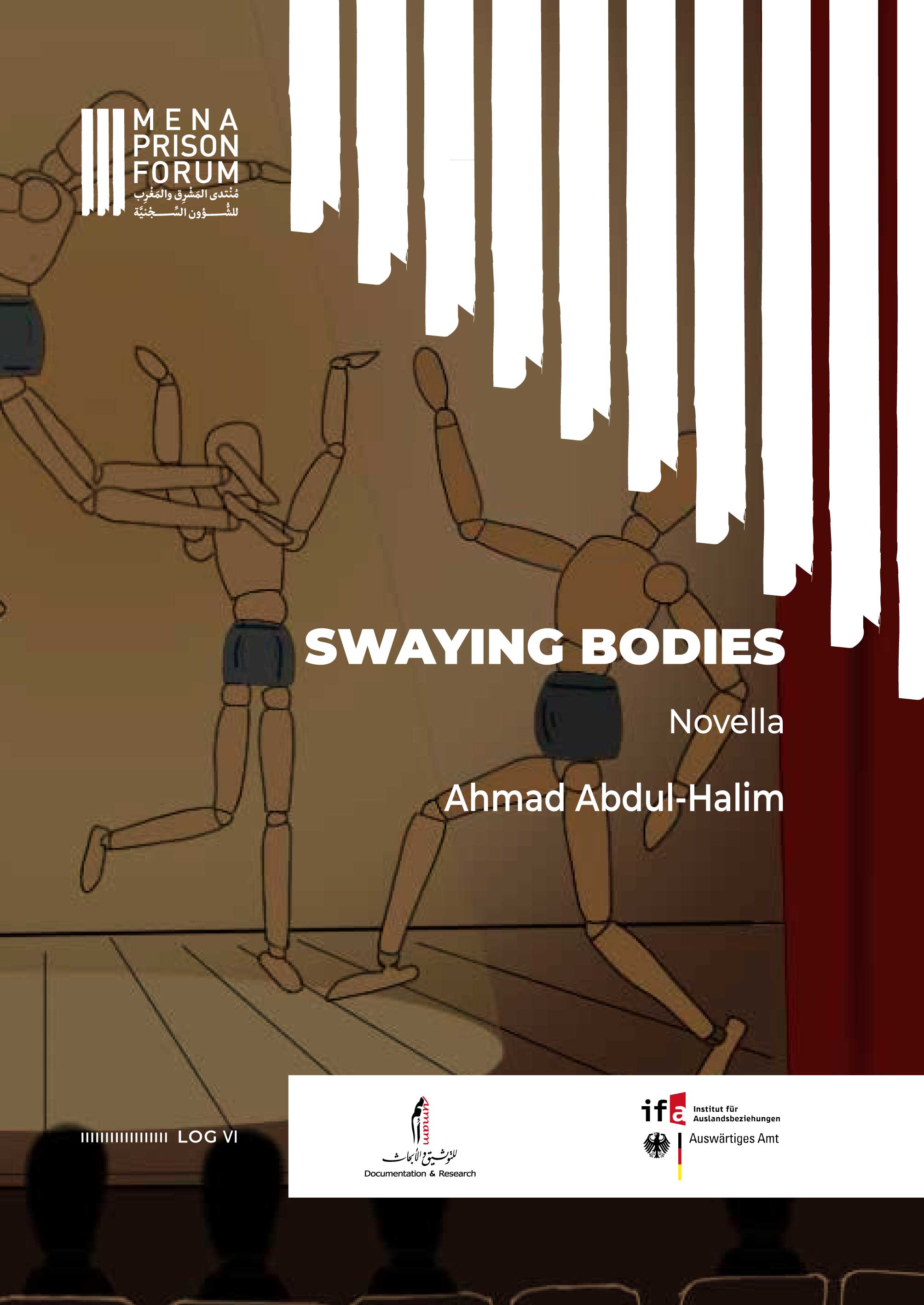
SWAYING BODIES
Ahmad Abdul-Halim, an Egyptian writer and researcher born in 1995, wrote Swaying Bodies as a description of prison experience. While he claims the work is fictional, the visceral and sensory descriptions in the text render the reader deeply affected by the conditions described. Abdul-Halim’s words are additionally strengthened due to their accompaniment by illustrations of Syrian activist and painter Dima Daly. Whether this work is one of true fiction or a masquerading testimony of personal experiences, the reader is shown how prison ordeals indelibly change those who experience them
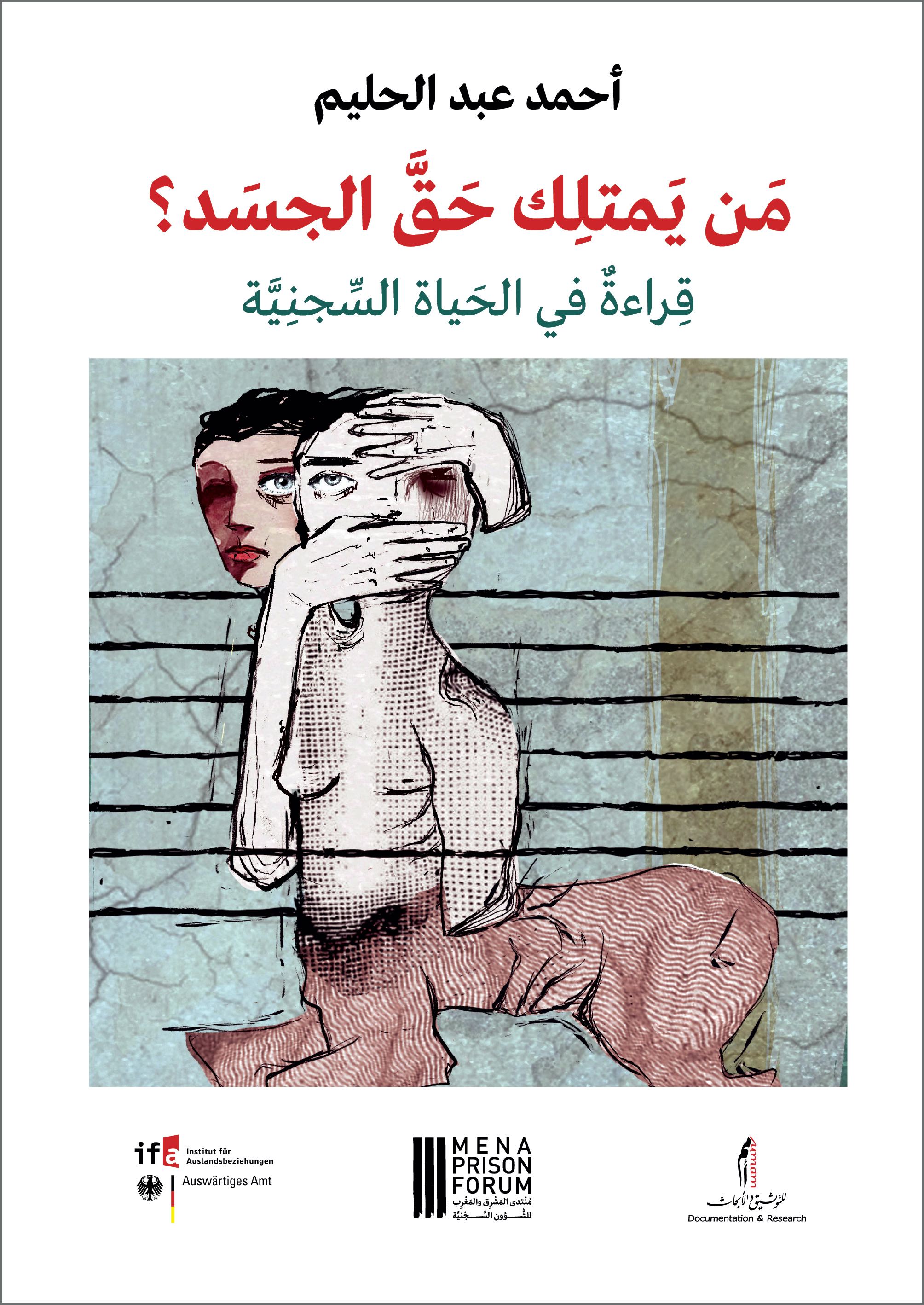
مَن يَمتلِك حَقَّ الجسَد؟
الجسدُ داخل الفضاء السِّجنـي ما زال مُهمَّـشا، بالرغم من أنه حلَّ مكانةً هامة في الممارسات والمنهـجيات السِّجنية، وذلك من خلال تفاعل السلطوية معه، وبشكلٍ مباشر، عبر إنزال العقاب عليه، وحَوكـمته، وترويضه ضمن آلياتٍ أخرى. يُحاول الكتاب إلغاءَ هذا التهميش، من خلال تفكيك علاقاتـية ثلاثـي الفضاء السِّجنـي: سلطة، واجتماع «السجناء»، وقانون. وذلك عبر تتـبع السياسات العقابية في الفضاء السِّجنـي المصري وأثرها على السجين/ السجينة «النفس والجسد»، وهذا من خلال رصد وتحليل تفاصيل رحلةٍ عميقةٍ حول فلسفة امتلاك السلطة جسد سَجينها وسجينتها، مُنذ تَخطِّيه وتخطِّيها أول بوابةٍ للسجنِ، مرورًا بـالمرئيات العقابية ووصولًا إلى ما بعد الخروج، لـنُكوِّن صورةً صلبةً ومتماسكة حول فلسفة وهدف العقاب، ونصل إلى تَبيِــين التأثيرات النفسية والعقلية والفكرية، كما التمثلات السيميولوجية على الجسد داخل الفضاء السِّجني وخارجه
Videos

رمضان بدون سجّان
القاهرة في المنفى
عنبر كله يسمع
Infographics

من يمتلك حق الجسد
الجسد المصري في سلطوية ما بعد ٣ يوليو
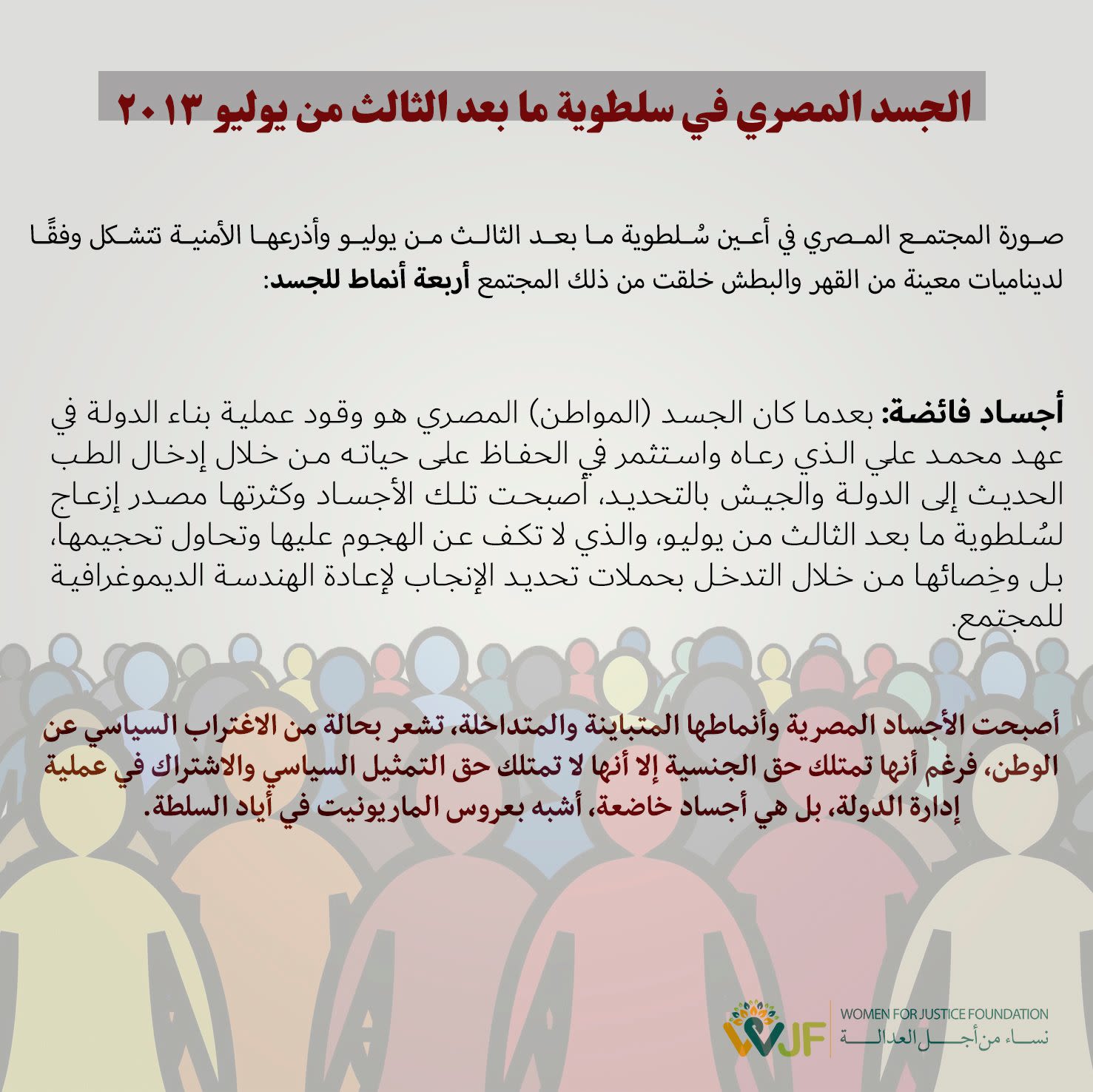
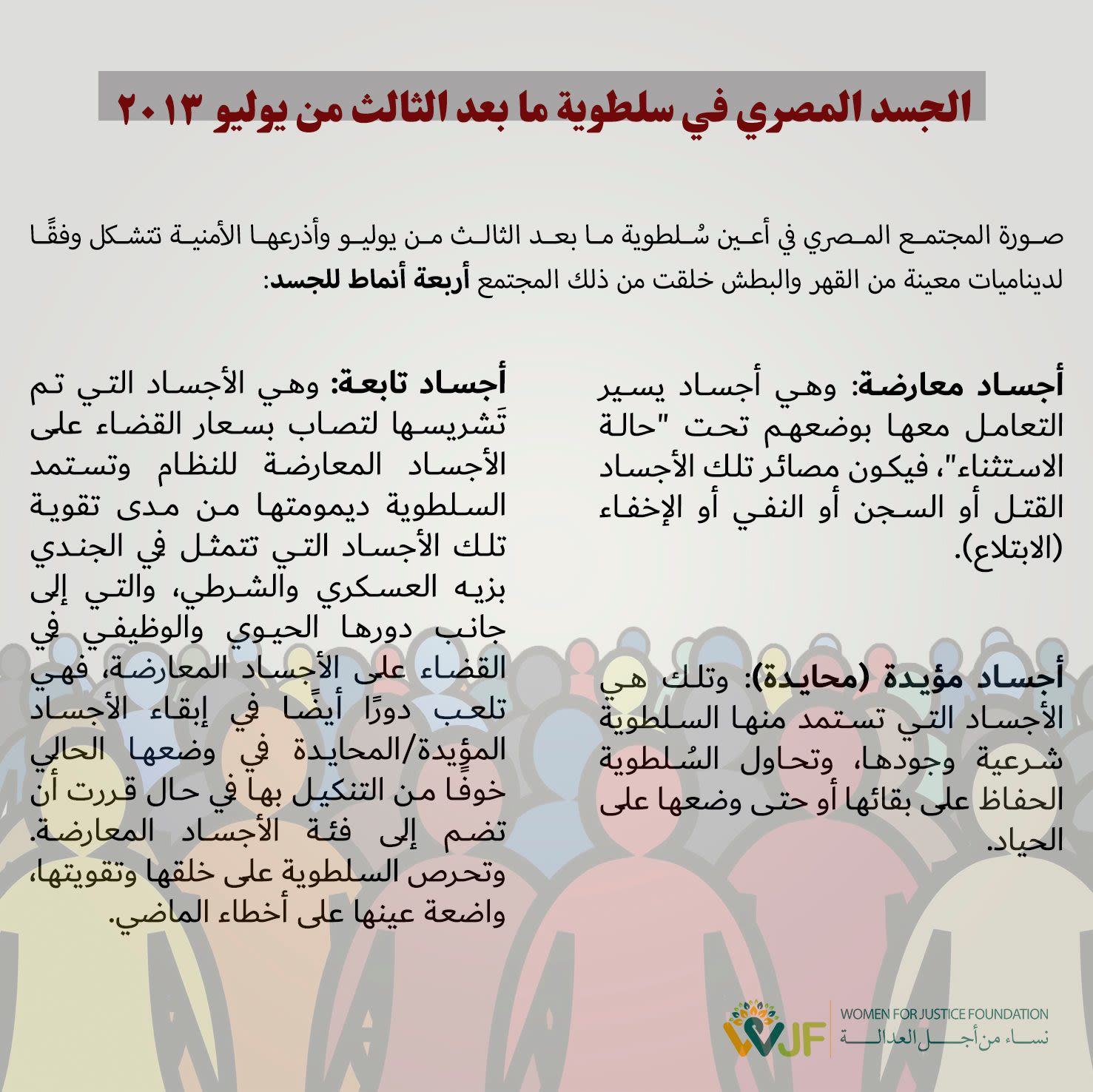
تمثلات جسد المرأة "المثالي" في المجتمع المصري


About
The body, which serves as a platform, houses a variety of written and visual performances, literature, stories, and poetry. Research, essays, books, photos, videos, discussion sessions, and films are all examples of this. Individuals, groups, authorities, and concepts such as culture, politics, economy, and technology help to circumvent and analyze the body, its relationship with itself, and its relationship with others around it.
الجسد، هو عبارة عن منصة، تحوي مختلف العروض الكتابية والمرئية، الأدب، من القصص والشعر. البحث والمقال والكُتب، كما الصور والفيديو وجلسات النقاش والأفلام. وكل ما يلتف ويساعد في فهم وتحليل الجسد، وعلاقته بذاته، وعلاقته بالآخرين من حوله، من أفراد جماعات وسُلطات، ومفاهيم، مثل الثقافة والسياسة والاقتصاد والتقنية.
body@women4justice.org

The Women for Justice Foundation lends its support to this project

